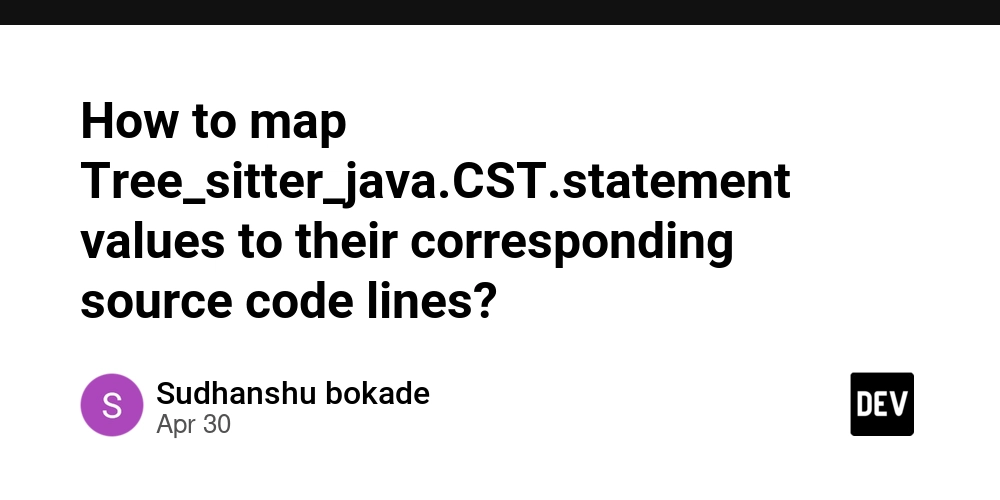Hire Skilled Remote Developers in 2025 Without Wasting Budget
TL;DR Remote-first giants like GitLab and Automattic proved distributed teams don’t just work — they often outperform co-located ones. Follow this playbook to define your budget, write job posts that attract A-players, spot red flags, and run a two-week trial that weeds out the fakers. Want instant cost numbers? Skip to the AI Calculator link at the end. Know Where You Stand Before You Start Hiring Scenario What It Really Means Team Shape That Fits MVP / Idea Validation Ship a market test in ≤ 4 months 1–2 senior full‑stack devs, a tech‑savvy PM, optional freelance QA/UX Early‑Stage Scaling Users and codebase are growing fast PM, backend + frontend, QA, DevOps — ~5–7 people total Enterprise / Deep Integrations Heavy ERP, security, or regulatory complexity Domain specialists (SAP, InfoSec, DBA), architect, QA automation, DevOps This guide focuses on the first two buckets, because hiring mistakes hurt most — and burn cash fastest — at these stages. If you’re already at Enterprise scale, keep reading; just layer in the relevant specialists (security, SAP, DevOps) from day one. 1 · Nail Your Goal, Budget & Team Blueprint Most “bad hires” start one step earlier—when the founder can’t explain exactly what the team is supposed to ship or how success will be measured. Let’s fix that first. 1.1 Set a SMART Objective (with a Real Example) Specific · Measurable · Achievable · Relevant · Time‑bound Scenario Weak Goal SMART Goal You Can Hire Against MVP / Idea Validation “Build a fitness app ASAP.” “Launch an iOS/Android MVP with step‑tracking & Stripe paywall by Sept 1, able to handle 500 DAU, on a budget of ≤ $60 K.” Early‑Stage Scaling “Make it faster.” “Cut avg API latency from 600 ms to 200 ms and migrate to k8s by Q4 with zero downtime.” Enterprise Integration “Connect to SAP somehow.” “Integrate SAP FICO into our logistics portal, syncing invoices every 15 min, SOX‑compliant, by Mar 31.” Write your SMART goal on a sticky note—every hiring decision flows from it. 1.2 Map Roles to Scope (Don’t Over‑ or Under‑Hire) Role Core Focus Typical Stack Annual USD* Front‑End Dev UI/UX, animations React, Flutter 72 K – 330 K Back‑End Dev APIs, DB, logic Node, Python, Go 76 K – 250 K QA / SDET Automated testing Cypress, Playwright 75 K – 230 K UI/UX Designer Flows & visuals Figma, XD 72 K – 300 K DevOps / Cloud CI/CD, infra AWS, k8s, Terraform 90 K – 200 K SAP / ERP Specialist Enterprise glue ABAP, FICO 96 K – 200 K * Global ranges, 2025. Offshore talent (Eastern EU, LatAm, SEA) usually sits in the lower third. Quick sanity check MVP? 1 × Senior Full‑Stack + 1 × PM (tech‑savvy) + fractional QA/Designer. Scaling? Add dedicated backend, frontend, QA, DevOps. Enterprise? Layer in architects, security, SAP pros from day one. 1.3 Pick the Right Engagement Model Model When It Shines Watch‑Out Dedicated Remote Dev Long‑term product ownership Needs onboarding & retention plan Freelance / On‑Demand Short spikes, POCs, bug hunts Context switching, lower commitment Outstaffing / Staff Aug Scale fast without HR overhead Still manage day‑to‑day tasks Full Remote Team (PM + Devs + QA) End‑to‑end delivery, clear SLA Higher monthly burn if idle Rule of thumb: If tasks change weekly → freelancers. If roadmap is ≥ 3 months → dedicated dev(s). If you need velocity and coordination → hire a full team. Next up: where to find these people (and make sure they aren’t résumé‑ware). 2 · Where to Find Remote Developers in 2025 (Without Drowning in Résumés) Once you know who you’re looking for, the next question is where to find them—without getting buried under a pile of irrelevant applications. Good news: global hiring in 2025 is easier (and smarter) if you know the right watering holes. 2.1 · Best Platforms to Hire Remote Developers Platform Best For Watch‑Out LinkedIn Senior and lead engineers Salary inflation, slow DMs Upwork / Toptal Freelancers for fast MVPs Platform fees, vet carefully DEV.to & HackerNews Builders with public repos Heavy volume, needs filtering Reddit (e.g., r/webdev, r/FlutterDev) Niche specialists Informal, needs strong vetting Discord Motivated junior devs Mixed reliability Meetups & Tech Conferences Culture fit in 1–2 convos Travel budget needed 2.2 · Where We Actually Found Our Best Remote Developers Flutter developers: Found via DEV.to profiles and GitHub commits. Backend engineers: Sourced through LinkedIn DMs after spotting good open-source contributions. QA testers: Upwork freelancers, filtered heavily (~90% rejection rate). UI/UX designers: Handpicked through Behance portfolios cross-checked inside Figma. Pro tip: The best candidates often aren’t actively looking. DM them after seeing real-world proof like blog posts, GitHub commits, or project showcases. 2.3 · SEO Tip for Job Posts

TL;DR
Remote-first giants like GitLab and Automattic proved distributed teams don’t just work — they often outperform co-located ones.
Follow this playbook to define your budget, write job posts that attract A-players, spot red flags, and run a two-week trial that weeds out the fakers.
Want instant cost numbers? Skip to the AI Calculator link at the end.
Know Where You Stand Before You Start Hiring
| Scenario | What It Really Means | Team Shape That Fits |
|---|---|---|
| MVP / Idea Validation | Ship a market test in ≤ 4 months | 1–2 senior full‑stack devs, a tech‑savvy PM, optional freelance QA/UX |
| Early‑Stage Scaling | Users and codebase are growing fast | PM, backend + frontend, QA, DevOps — ~5–7 people total |
| Enterprise / Deep Integrations | Heavy ERP, security, or regulatory complexity | Domain specialists (SAP, InfoSec, DBA), architect, QA automation, DevOps |
This guide focuses on the first two buckets, because hiring mistakes hurt most — and burn cash fastest — at these stages.
If you’re already at Enterprise scale, keep reading; just layer in the relevant specialists (security, SAP, DevOps) from day one.
1 · Nail Your Goal, Budget & Team Blueprint
Most “bad hires” start one step earlier—when the founder can’t explain exactly what the team is supposed to ship or how success will be measured.
Let’s fix that first.
1.1 Set a SMART Objective (with a Real Example)
Specific · Measurable · Achievable · Relevant · Time‑bound
| Scenario | Weak Goal | SMART Goal You Can Hire Against |
|---|---|---|
| MVP / Idea Validation | “Build a fitness app ASAP.” | “Launch an iOS/Android MVP with step‑tracking & Stripe paywall by Sept 1, able to handle 500 DAU, on a budget of ≤ $60 K.” |
| Early‑Stage Scaling | “Make it faster.” | “Cut avg API latency from 600 ms to 200 ms and migrate to k8s by Q4 with zero downtime.” |
| Enterprise Integration | “Connect to SAP somehow.” | “Integrate SAP FICO into our logistics portal, syncing invoices every 15 min, SOX‑compliant, by Mar 31.” |
Write your SMART goal on a sticky note—every hiring decision flows from it.
1.2 Map Roles to Scope (Don’t Over‑ or Under‑Hire)
| Role | Core Focus | Typical Stack | Annual USD* |
|---|---|---|---|
| Front‑End Dev | UI/UX, animations | React, Flutter | 72 K – 330 K |
| Back‑End Dev | APIs, DB, logic | Node, Python, Go | 76 K – 250 K |
| QA / SDET | Automated testing | Cypress, Playwright | 75 K – 230 K |
| UI/UX Designer | Flows & visuals | Figma, XD | 72 K – 300 K |
| DevOps / Cloud | CI/CD, infra | AWS, k8s, Terraform | 90 K – 200 K |
| SAP / ERP Specialist | Enterprise glue | ABAP, FICO | 96 K – 200 K |
* Global ranges, 2025. Offshore talent (Eastern EU, LatAm, SEA) usually sits in the lower third.
Quick sanity check
- MVP? 1 × Senior Full‑Stack + 1 × PM (tech‑savvy) + fractional QA/Designer.
- Scaling? Add dedicated backend, frontend, QA, DevOps.
- Enterprise? Layer in architects, security, SAP pros from day one.
1.3 Pick the Right Engagement Model
| Model | When It Shines | Watch‑Out |
|---|---|---|
| Dedicated Remote Dev | Long‑term product ownership | Needs onboarding & retention plan |
| Freelance / On‑Demand | Short spikes, POCs, bug hunts | Context switching, lower commitment |
| Outstaffing / Staff Aug | Scale fast without HR overhead | Still manage day‑to‑day tasks |
| Full Remote Team (PM + Devs + QA) | End‑to‑end delivery, clear SLA | Higher monthly burn if idle |
Rule of thumb: If tasks change weekly → freelancers.
If roadmap is ≥ 3 months → dedicated dev(s).
If you need velocity and coordination → hire a full team.
Next up: where to find these people (and make sure they aren’t résumé‑ware).
2 · Where to Find Remote Developers in 2025 (Without Drowning in Résumés)
Once you know who you’re looking for, the next question is where to find them—without getting buried under a pile of irrelevant applications.
Good news: global hiring in 2025 is easier (and smarter) if you know the right watering holes.
2.1 · Best Platforms to Hire Remote Developers
| Platform | Best For | Watch‑Out |
|---|---|---|
| Senior and lead engineers | Salary inflation, slow DMs | |
| Upwork / Toptal | Freelancers for fast MVPs | Platform fees, vet carefully |
| DEV.to & HackerNews | Builders with public repos | Heavy volume, needs filtering |
| Reddit (e.g., r/webdev, r/FlutterDev) | Niche specialists | Informal, needs strong vetting |
| Discord | Motivated junior devs | Mixed reliability |
| Meetups & Tech Conferences | Culture fit in 1–2 convos | Travel budget needed |
2.2 · Where We Actually Found Our Best Remote Developers
- Flutter developers: Found via DEV.to profiles and GitHub commits.
- Backend engineers: Sourced through LinkedIn DMs after spotting good open-source contributions.
- QA testers: Upwork freelancers, filtered heavily (~90% rejection rate).
- UI/UX designers: Handpicked through Behance portfolios cross-checked inside Figma.
Pro tip: The best candidates often aren’t actively looking.
DM them after seeing real-world proof like blog posts, GitHub commits, or project showcases.
2.3 · SEO Tip for Job Posts
When you post your job, use search-intent keywords to attract serious developers:
- “Remote Flutter Developer Needed”
- “Remote Backend Developer Job 2025”
- “Hiring Remote Software Engineers [Stack]”
- “Remote Dev Team for Startup MVP”
Better keyword targeting = better applications = less wasted time.
Next up: how to actually write a job post that magnetically attracts top-tier remote devs—and filters out the noise.
3 · How to Actually Write a Job Post That Attracts Top Remote Developers (and Filters Out the Noise)
Good developers can smell a bad job listing from a mile away.
If your post is vague, bloated with buzzwords, or stuffed with 20 “required” skills — they won’t even click.
Here’s how to write a listing that magnetically pulls the right people in — and quietly filters out the rest.
3.1 · Start With an SEO-Optimized Headline
Format:
(Remote | Time Zone) — —
Examples:
- Senior Flutter Developer (Remote, UTC-1 to UTC+3) — Firebase, Stripe — Launch MVP by Q4
- Remote Node.js Engineer — AWS Lambda — Cut Server Costs 40%
Tip: Use phrases like “Remote Job 2025”, “Hiring Remote Developers” — they match exactly what good candidates (and Google) are searching for.
3.2 · The 6 Essential Parts of a High-Converting Job Post
| Section | What to Include | Why It Matters |
|---|---|---|
| Opening Hook | 1 mission + 1 success metric: “Build a fitness MVP for 10K users by Sept 1.” | Great devs are mission-driven. |
| Stack Snapshot | Real tech list (e.g., “Flutter 3, Firebase, Stripe, GitHub Actions”) | Avoids surprises; self-filtering. |
| 3 Key Outcomes | Bullet points on real deliverables (e.g., "Ship paywall flow", "Optimize cold-start time <1s") | Focuses on impact, not buzzwords. |
| Perks That Matter | Async culture, profit share, no-meeting Fridays, relocation budget if needed. | Signals you're serious about people, not just code. |
| Timezone Expectations | “Must overlap 4 hours with UTC+2.” | Critical for remote coordination. |
| One Clear CTA | “Send GitHub + LinkedIn + favorite past project.” | Low friction; screens out unserious candidates. |












































































